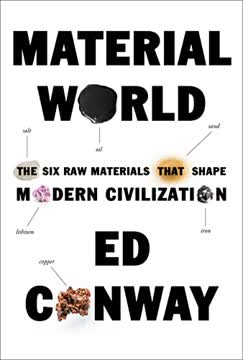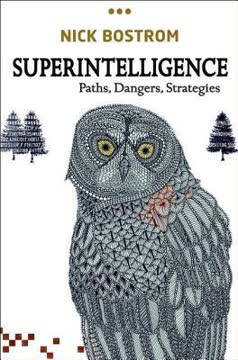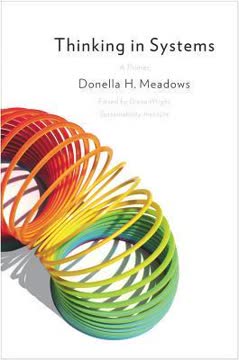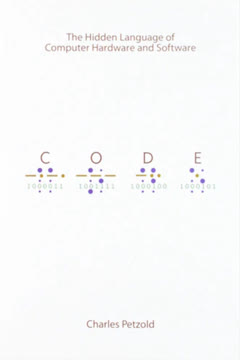نکات کلیدی
1. فناوری، برنامهریزی پدیدههای طبیعی
فناوری پدیدهای است که به ثبت رسیده و به کار گرفته میشود.
اجزای سازنده طبیعت. در اصل، فناوری هماهنگی پدیدههای طبیعی برای دستیابی به اهداف انسانی است. از استفاده ساده از آتش برای پخت و پز تا دستکاری پیچیده اثرات کوانتومی در الکترونیک مدرن، تمام فناوریها یک یا چند اثر موجود در طبیعت را به کار میگیرند. این اصل بنیادی توضیح میدهد که چرا پیشرفت فناوری به شدت به درک علمی وابسته است – هرچه پدیدههای جدیدی را کشف کنیم، ابزارهای جدیدی برای ایجاد فناوریها به دست میآوریم.
لایههای پیچیدگی. فناوریها به ندرت از پدیدهها در شکل خام خود استفاده میکنند. در عوض، آنها چندین اثر را به شیوههای پیچیده ترکیب میکنند تا به هدف خود برسند. به عنوان مثال، یک گوشی هوشمند مدرن از امواج الکترومغناطیسی برای ارتباط، تونلزنی کوانتومی در ترانزیستورها برای پردازش و الکتروشیمی در باتریها برای تأمین انرژی استفاده میکند. این لایهبندی پدیدهها امکان ایجاد فناوریهای پیچیدهتر و توانمندتر را فراهم میآورد.
- مثالهایی از پدیدههای به کار گرفته شده:
- گرما برای پخت و ذوب فلزات
- امواج الکترومغناطیسی برای ارتباط
- واکنشهای شیمیایی برای پزشکی و مواد
- اثرات کوانتومی برای محاسبات
2. همه فناوریها ترکیبی از عناصر موجود هستند
فناوریهای نوین از اجزای سازندهای ایجاد میشوند که خود فناوری هستند و به بلوکهای سازنده بالقوه برای ساخت فناوریهای جدیدتر تبدیل میشوند.
ساختار بازگشتی. فناوریها اختراعات مستقل نیستند، بلکه ترکیبی از اجزای موجود هستند که خود فناوری محسوب میشوند. این ماهیت بازگشتی به این معناست که حتی پیچیدهترین دستگاهها نیز میتوانند به اجزای سادهتر تقسیم شوند، هر کدام با هدف و عملکرد خاص خود. درک این ساختار برای نوآوری و حل مسائل در فناوری بسیار مهم است.
نوآوری از طریق ترکیب. ماهیت ترکیبی فناوری توضیح میدهد که چرا نوآوری اغلب از گرد هم آوردن ایدهها یا اجزای مختلف از زمینههای گوناگون به وجود میآید. همچنین این نکته را نشان میدهد که با افزایش تعداد فناوریهای موجود، پتانسیل برای ترکیبهای جدید – و در نتیجه نوآوریهای جدید – به طور نمایی افزایش مییابد. این اصل پایهگذار شتاب فزاینده تغییرات فناوری است که در دنیای مدرن مشاهده میکنیم.
- پیامدهای کلیدی:
- هر فناوری جدید امکاناتی برای نوآوریهای آینده ایجاد میکند
- دانش بینرشتهای میتواند به پیشرفتهای چشمگیری منجر شود
- پتانسیل نوآوری با پیشرفت فناوری افزایش مییابد
3. حوزهها: مجموعههای فناوری که امکانات را شکل میدهند
یک حوزه هر خوشهای از اجزا خواهد بود که برای تشکیل دستگاهها یا روشها از آنها استفاده میشود، به همراه مجموعهای از شیوهها و دانش، قوانین ترکیب و شیوه تفکر مرتبط با آن.
اکوسیستمهای فناوری. حوزهها تنها مجموعهای از فناوریهای مرتبط نیستند، بلکه اکوسیستمهای کامل دانش، شیوهها و امکانات هستند. آنها نحوه تفکر مهندسان و مخترعان را در مورد مسائل و راهحلها در زمینه خود شکل میدهند. درک حوزهها برای فهم چگونگی تکامل فناوری و اینکه چرا برخی نوآوریها در زمان خاصی ظهور میکنند، بسیار مهم است.
تغییر حوزه به عنوان نوآوری. برخی از مهمترین پیشرفتهای فناوری نه از بهبود فناوریهای موجود، بلکه از تغییر حوزه – به کارگیری اصول یا اجزای یک حوزه برای حل مسائل در حوزهای دیگر – به وجود میآید. این فرآیند میتواند به تغییرات انقلابی منجر شود و امکانات کاملاً جدیدی را که قبلاً غیرقابل تصور بودند، باز کند.
- مثالهایی از حوزههای فناوری:
- الکترونیک
- بیوتکنولوژی
- علم مواد
- فناوری اطلاعات
- تأثیر حوزهها:
- تعریف "ممکن" در یک دوره خاص
- شکلدهی به صنایع و ساختارهای اقتصادی
- تأثیر بر رویکردهای حل مسئله
4. فرآیند اختراع: پیوند نیازها با اثرات
اختراع شامل پیوند یک نیاز با یک اثر برای دستیابی رضایتبخش به آن نیاز است.
جفتسازی مشکل و راهحل. اختراع یک فرآیند مرموز از نبوغ نیست، بلکه پیوند سیستماتیک نیازهای شناسایی شده با راهحلهای بالقوه بر اساس اثرات یا پدیدههای شناخته شده است. این درک نوآوری را از حالت رازآلود خارج کرده و راههایی برای تقویت آن به طور مؤثرتر پیشنهاد میکند.
حل مسئله به صورت بازگشتی. فرآیند اختراع اغلب بازگشتی است، به طوری که هر راهحل بالقوه چالشهای جدیدی را که باید به آنها پرداخته شود، نمایان میکند. این ماهیت تکراری توضیح میدهد که چرا اختراعات مهم اغلب سالها توسعه و بهینهسازی نیاز دارند تا به مرحله عملی برسند.
- مراحل کلیدی در اختراع:
- شناسایی یک نیاز یا مشکل
- شناسایی اثرات یا پدیدههای بالقوهای که میتوانند به نیاز پاسخ دهند
- مفهومسازی یک اصل که نیاز و اثر را پیوند میزند
- توسعه پیادهسازیهای عملی از اصل
- بهینهسازی و اصلاح راهحل
5. عمیقسازی ساختاری: چگونه فناوریها پیچیدهتر میشوند
با افزودن زیرسیستمها برای دور زدن چنین محدودیتهایی، فناوریها در حین تکامل خود گسترش مییابند. آنها "عمق" یا پیچیدگی طراحی را به ساختارهای خود اضافه میکنند.
تکامل از طریق پیچیدگی. با بلوغ فناوریها، آنها اغلب به جای سادهتر شدن، پیچیدهتر میشوند. این فرآیند که به آن عمیقسازی ساختاری گفته میشود، زمانی رخ میدهد که مهندسان زیرسیستمهایی را برای غلبه بر محدودیتها، بهبود عملکرد یا گسترش قابلیتها اضافه میکنند. درک این تمایل به توضیح اینکه چرا فناوریهای بالغ میتوانند به راحتی جایگزین نشوند، کمک میکند.
معامله بین عملکرد و پیچیدگی. عمیقسازی ساختاری به فناوریها این امکان را میدهد که عملکرد بالاتر یا قابلیتهای وسیعتری را به دست آورند، اما به قیمت افزایش پیچیدگی. این معامله میتواند فرصتهایی برای نوآوریهای مخرب ایجاد کند که راهحلهای سادهتری برای مشکلات اصلی ارائه میدهند و ممکن است فناوریهای پیچیدهتر موجود را جایگزین کنند.
- دلایل عمیقسازی ساختاری:
- غلبه بر محدودیتهای عملکرد
- سازگاری با شرایط متغیر
- افزایش ایمنی و قابلیت اطمینان
- گسترش قابلیتها
- مثالها:
- موتورهای هواپیما که به مرور زمان پیچیدهتر میشوند
- گوشیهای هوشمند که حسگرها و ویژگیهای بیشتری را ادغام میکنند
6. تکامل ترکیبی: فناوری خود را خلق میکند
فناوری از خود به وجود میآید.
پیشرفت خودجوش. تکامل فناوری یک فرآیند خودتقویتکننده است. فناوریهای جدید به بلوکهای سازندهای برای نوآوریهای آینده تبدیل میشوند و مجموعهای از امکانات را به طور مداوم گسترش میدهند. این اصل توضیح میدهد که چرا سرعت تغییرات فناوری به طور فزایندهای افزایش مییابد و نشان میدهد که پتانسیل نوآوری به مرور زمان به طور نمایی افزایش مییابد.
توسعه غیرخطی. پیشرفت فناوری نه صاف و نه قابل پیشبینی است. در عوض، اغلب در انفجارهایی پیش میرود، با دورههای پیشرفت سریع که به دنبال آن تثبیت میآید. این الگو از ماهیت ترکیبی نوآوری ناشی میشود، جایی که یک پیشرفت واحد میتواند چندین امکان جدید را باز کند.
- جنبههای کلیدی تکامل ترکیبی:
- فناوریهای موجود به عنوان بلوکهای سازنده برای فناوریهای جدید عمل میکنند
- پتانسیل نوآوری با تعداد فناوریهای موجود افزایش مییابد
- پیشرفت میتواند غیرقابل پیشبینی و غیرخطی باشد
- پیامدها:
- پیشبینیهای بلندمدت فناوری به طور ذاتی دشوار است
- دانش بینرشتهای به طور فزایندهای ارزشمند میشود
- سرعت تغییر احتمالاً به افزایش خود ادامه خواهد داد
7. اقتصاد به عنوان بیان فناوریهایش
اقتصاد بیان فناوریهایش است.
فناوری ساختارهای اقتصادی را شکل میدهد. به جای اینکه اقتصاد را به عنوان ظرفی برای فناوریها ببینیم، باید آن را به عنوان چیزی که به طور بنیادی توسط فناوریهایی که در بر میگیرد، شکل میگیرد، درک کنیم. این دیدگاه به توضیح اینکه چرا انقلابهای فناوری منجر به تغییرات عمیق اقتصادی و اجتماعی میشوند، کمک میکند.
تغییر ساختاری اقتصادی. با ظهور و گسترش فناوریهای جدید، آنها تنها کارایی را درون ساختارهای اقتصادی موجود بهبود نمیبخشند. در عوض، آنها اغلب نیازمند و ایجادکننده ترتیبات کاملاً جدیدی هستند، از مدلهای کسب و کار تا چارچوبهای قانونی. این فرآیند تغییر ساختاری کلید درک توسعه اقتصادی بلندمدت است.
- راههایی که فناوری اقتصاد را شکل میدهد:
- تعریف محصولات و خدمات ممکن
- تأثیر بر ساختارهای سازمانی و مدلهای کسب و کار
- شکلدهی به بازارهای کار و نیازهای مهارتی
- ایجاد صنایع جدید و کاهش دیگر صنایع
- مثالهایی از تغییرات اقتصادی ناشی از فناوری:
- صنعتی شدن و ظهور کارخانهها
- تحول دیجیتال و اقتصاد پلتفرم
8. پارادوکس فناوری: امید و نگرانی در رابطه ما با طبیعت
ما به فناوری امید داریم تا زندگیمان را بهتر کند، مشکلاتمان را حل کند، ما را از بحرانها نجات دهد و آیندهای که میخواهیم برای خود و فرزندانمان فراهم کند. با این حال، به عنوان انسانها، ما به این چیز که به آن امید داریم – نه به فناوری – بلکه به چیزی متفاوتتر، وابستهایم.
معضل اعتماد و امید. انسانها با تنش بنیادی در رابطه خود با فناوری مواجهاند. ما به آن برای پیشرفت و راهحلهای مشکلاتمان وابستهایم، اما اغلب احساس راحتی بیشتری با طبیعت داریم. این پارادوکس بسیاری از دوگانگیهای ما نسبت به پیشرفت فناوری را زیر سؤال میبرد.
ناوبری در آینده. با قدرتمندتر و فراگیرتر شدن فناوری، به ویژه در زمینههایی مانند مهندسی ژنتیک و هوش مصنوعی، این تنش احتمالاً تشدید خواهد شد. حل این معضل نیازمند رویکردی دقیق است که پیشرفت فناوری را در آغوش بگیرد و در عین حال به ارتباط عمیقتری که با دنیای طبیعی داریم، توجه کند.
- منابع نگرانیهای فناوری:
- ترس از از دست دادن کنترل یا اختیار
- نگرانیها درباره تأثیرات زیستمحیطی
- نگرانیها درباره پیامدهای اجتماعی و اخلاقی
- عوامل متعادلکننده:
- شناخت مزایای فناوری
- تلاش برای توسعه فناوریهای "طبیعیتر" یا پایدارتر
- چارچوبهای اخلاقی برای توسعه فناوری
آخرین بهروزرسانی::
FAQ
What's The Nature of Technology about?
- Exploration of Technology: The book explores the essence and evolution of technology, questioning what it is and how it develops over time. W. Brian Arthur provides a comprehensive theory of technology, emphasizing its interconnectedness and historical context.
- Combinatorial Evolution: Arthur introduces the concept of "combinatorial evolution," where new technologies emerge from the combination of existing ones. This highlights the importance of combination in technological advancement.
- Economic Interplay: The book discusses how technology and the economy evolve together, suggesting that technological advancements drive economic growth and transformation.
Why should I read The Nature of Technology?
- Deep Understanding: The book offers a comprehensive framework for understanding technology, making it accessible to both specialists and general readers. Arthur's insights help readers appreciate the complexities of technology in everyday life.
- Relevance to Current Issues: As technology increasingly shapes our world, understanding its nature and evolution is vital for navigating contemporary challenges. The book addresses the implications of technology on society, economy, and the environment.
- Engaging Writing Style: Arthur presents complex ideas in plain English, making the book approachable. His engaging narrative encourages readers to think critically about the role of technology in their lives.
What are the key takeaways of The Nature of Technology?
- Technology as Combination: A central takeaway is that technology evolves through the combination of existing technologies, which Arthur refers to as "combinatorial evolution." This principle highlights the interconnectedness of technological advancements.
- Recursive Structure: Technologies have a recursive structure, meaning that each component of a technology can also be considered a technology in its own right. This insight emphasizes the complexity and depth of technological systems.
- Role of Phenomena: Arthur argues that technologies are fundamentally based on the exploitation of natural phenomena. Understanding these phenomena is crucial for grasping how technologies are developed and utilized.
How does W. Brian Arthur define technology in The Nature of Technology?
- Means to Fulfill Purpose: Arthur defines technology as a means to fulfill a human purpose, encompassing devices, methods, and processes. This broad definition allows for a wide range of technologies to be considered.
- Assemblage of Practices: He describes technology as an assemblage of practices and components, highlighting the collaborative nature of technological development. This perspective emphasizes the importance of collective knowledge in creating technology.
- Collection of Devices: Arthur refers to technology as the totality of devices and engineering practices available to a culture, reflecting the cumulative nature of technological advancement.
What is "combinatorial evolution" in The Nature of Technology?
- Combination of Technologies: Combinatorial evolution is the process by which new technologies arise from the combination of existing ones. This allows for the gradual development of more complex technologies over time.
- Recursive Structure: Technologies consist of components that are themselves technologies, creating a recursive structure. This insight reveals how technologies build upon one another, leading to innovation and advancement.
- Capturing Phenomena: The evolution of technology is driven by the capture and harnessing of natural phenomena. This principle highlights the importance of understanding the effects that technologies exploit.
How does The Nature of Technology explain the relationship between technology and the economy?
- Mutual Influence: Arthur argues that the economy and technology are inextricably linked, with each influencing the other. As new technologies emerge, they reshape economic structures, while economic conditions can drive technological innovation.
- Structural Change: The introduction of new technologies leads to structural changes in the economy, creating new industries and altering existing ones. This dynamic process reflects the ongoing evolution of both technology and economic arrangements.
- Opportunity Niches: Technologies create opportunity niches for further innovations, which in turn drive economic growth. This interplay between technological advancement and economic adaptation is a central theme in understanding modern economies.
What role do phenomena play in technology according to The Nature of Technology?
- Foundation of Technology: Arthur asserts that all technologies are based on the exploitation of natural phenomena, which serve as the foundation for technological development. This connection emphasizes the relationship between technology and the natural world.
- Orchestration of Effects: Technology is described as a programming of phenomena to fulfill human purposes, highlighting the orchestration of various effects in creating functional technologies.
- Discovery and Utilization: The process of uncovering phenomena is crucial for technological advancement, as new effects lead to new technologies. Scientific inquiry and experimentation contribute to the discovery of these phenomena.
What is the "pyramid of causality" in The Nature of Technology?
- Foundation of Technology: The pyramid of causality refers to the idea that every new technology is supported by a foundation of existing technologies and knowledge. This concept illustrates how innovations are built upon previous advancements.
- Complex Interdependencies: This pyramid includes not only direct predecessors but also supporting principles, components, and the interactions among people involved in the technological process.
- Implications for Invention: Understanding the pyramid of causality helps clarify why certain technologies emerge when they do, emphasizing the importance of timing and the availability of necessary components and knowledge.
How does W. Brian Arthur differentiate between standard engineering and invention in The Nature of Technology?
- Standard Engineering: Arthur describes standard engineering as the process of designing and constructing new instances of known technologies. This involves problem-solving and applying existing knowledge to create functional solutions.
- Invention: In contrast, invention is characterized by the creation of radically new technologies that utilize different principles. This process often involves linking a need with a novel effect or principle to achieve a specific purpose.
- Cumulative Process: Both standard engineering and invention contribute to technological evolution, with standard engineering providing solutions that can become building blocks for future innovations.
What role do "opportunity niches" play in technological evolution according to The Nature of Technology?
- Definition of Opportunity Niches: Opportunity niches are unmet needs or problems that arise within the context of existing technologies. These niches create demand for new solutions and innovations, driving the evolution of technology.
- Creation of New Technologies: As technologies evolve, they often generate new opportunity niches that call for further innovations. This process illustrates the reciprocal relationship between technology and the needs it creates.
- Historical Context: Opportunity niches are not static; they change as technologies develop and societal needs evolve. This dynamic nature of opportunity niches is crucial for understanding how technological advancements emerge over time.
What is the significance of "structural deepening" in technological development as discussed in The Nature of Technology?
- Definition of Structural Deepening: Structural deepening refers to the process by which technologies become more complex and sophisticated over time. This complexity arises from the addition of new components and subsystems that enhance performance and functionality.
- Evolution of Technologies: As technologies mature, they often require additional systems to address limitations and improve efficiency. This process of deepening contributes to the overall evolution of technology and its increasing complexity.
- Implications for Innovation: Understanding structural deepening helps clarify how technologies adapt to changing needs and environments. This adaptability is crucial for fostering innovation and ensuring that technologies remain relevant in a rapidly evolving landscape.
What are the best quotes from The Nature of Technology and what do they mean?
- "Technology creates our world.": This quote emphasizes the profound impact of technology on shaping human existence and societal structures. It highlights the idea that technology is not just a tool but a fundamental force in defining our reality.
- "Technologies consist of other technologies.": This statement underscores the recursive nature of technology, where new innovations are built upon existing ones. It reflects the interconnectedness of technological development and the importance of combination in evolution.
- "A technology is a phenomenon captured and put to use.": This quote encapsulates Arthur's definition of technology, emphasizing the role of natural phenomena in driving technological advancement. It highlights the idea that technology is fundamentally about harnessing and utilizing the effects of nature.
نقد و بررسی
کتاب ماهیت فناوری بهطور عمده نظرات مثبتی را بهخود جلب کرده است، بهخاطر تحلیلهای عمیق آن از تکامل فناوری و تأثیر آن بر جامعه. خوانندگان از چارچوب واضح آرتور برای درک فناوری بهعنوان ترکیبی از اجزای موجود و بررسی چگونگی شکلگیری اقتصادها توسط فناوری قدردانی میکنند. برخی نوشتار را خشک یا تکراری میدانند، اما بسیاری عمق و اصالت کتاب را ستایش میکنند. منتقدان اشاره میکنند که مفاهیم انتزاعی ممکن است دشوار برای درک باشند، در حالی که حامیان بر پتانسیل کتاب برای تغییر دیدگاه فرد نسبت به فناوری و نوآوری تأکید میکنند.
Similar Books












